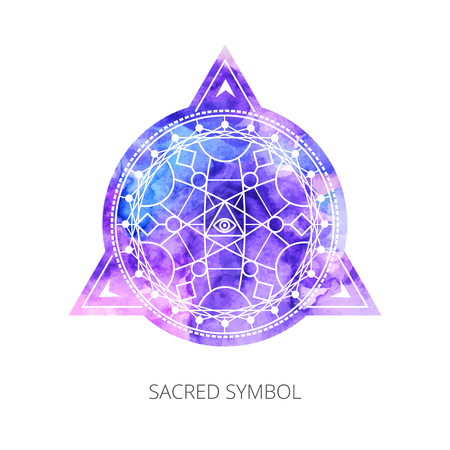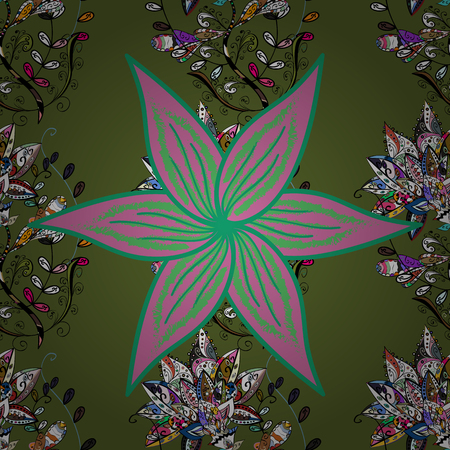Introduction to Aleister Crowley and The Golden Dawn
When discussing the tapestry of British esoteric traditions, two names stand out as foundational: Aleister Crowley and the Hermetic Order of the Golden Dawn. Both have become synonymous with the evolution of occult practice in the United Kingdom, particularly as it pertains to tarot. Aleister Crowley, often dubbed “the wickedest man in the world” by contemporary tabloids, was a prolific writer, ceremonial magician, and an influential figure whose radical ideas left an indelible mark on Western mysticism. On the other hand, the Golden Dawn, established in London in 1888, represented a structured attempt to synthesise various strands of magic, alchemy, astrology, and Kabbalah into a cohesive system. Their teachings not only shaped the way modern Britons approach mysticism but also laid the groundwork for much of today’s tarot symbolism and interpretation. This introductory overview sets the stage for understanding how these two forces became cornerstones of British esotericism, ultimately guiding how tarot is studied and practised across the UK.
2. Historical Context: Occultism in Victorian and Edwardian Britain
The late nineteenth and early twentieth centuries in Britain were marked by a profound fascination with the mystical, spiritual, and esoteric. This period, straddling the reigns of Queen Victoria and King Edward VII, witnessed a significant shift in the public’s attitude towards religion, science, and the unknown. The Industrial Revolution had upended traditional ways of life, urbanisation was accelerating, and scientific advancements both answered and provoked further questions about humanity’s place in the universe. Amidst this atmosphere of intellectual upheaval, the British public developed a keen interest in occultism as a means to reconcile the rational with the mysterious.
Secret societies flourished, offering a sense of community and purpose to those who felt adrift in an increasingly mechanised world. Spiritualism—centred on communicating with the dead—captured popular imagination, while Eastern philosophies and ancient mystical texts found a receptive audience among the educated classes. The formation of organisations such as The Hermetic Order of the Golden Dawn reflected this cultural climate, blending ritual magic, Kabbalah, alchemy, astrology, and Tarot into a uniquely British spiritual synthesis.
Key Factors Influencing Occult Movements
| Factor | Description | Impact on Occultism |
|---|---|---|
| Industrialisation | Rapid social change and loss of traditional structures | Drove people to seek meaning beyond material progress |
| Scientific Discovery | New theories challenged religious orthodoxy | Encouraged exploration of alternative spiritualities |
| Colonial Expansion | Exposure to Eastern philosophies and practices | Enriched British occultism with new ideas (e.g., yoga, meditation) |
| Literary Romanticism | Renewed interest in myth, symbolism, and the supernatural | Paved the way for creative interpretations of Tarot and magic |
| Secret Societies | Emergence of groups like Freemasons and Rosicrucians | Set organisational models for Golden Dawn and similar orders |
This unique blend of influences created fertile ground for figures like Aleister Crowley to emerge. Crowley—and indeed The Golden Dawn—did not arise in isolation; their teachings resonated precisely because they spoke to broader yearnings within British society. As we will see in subsequent sections, this context is essential for understanding how their impact on Tarot became so profound within the UK.

3. The Golden Dawns Contributions to Tarot Symbolism
When examining the legacy of the Hermetic Order of the Golden Dawn, it is impossible to overlook their profound impact on the symbolism and interpretation of tarot within the UK. Unlike earlier continental European decks, which often adhered to established visual traditions and relatively simple iconography, the Golden Dawn introduced a sweeping overhaul grounded in esoteric scholarship and meticulous systematisation. Their approach was not merely an adaptation; it was an ambitious reimagining intended for use by initiates rather than casual fortune-tellers.
The Golden Dawn’s tarot innovations were rooted in their syncretic philosophy, drawing together elements from Kabbalah, astrology, alchemy, and classical mythology. For example, each Major Arcana card was carefully assigned to specific Hebrew letters and astrological correspondences, creating a dense web of interrelated meanings. This went far beyond the continental tradition, where such connections were typically absent or only loosely implied. Members such as S.L. MacGregor Mathers and A.E. Waite meticulously documented these correspondences in their ritual manuscripts—many of which later found their way into published works that shaped British occult thought well into the twentieth century.
One particularly distinctive innovation was the reordering and renaming of certain cards to align them more closely with the group’s esoteric framework. The Strength and Justice cards, for instance, were swapped in order—a decision rooted in numerological considerations that reflected deeper hermetic principles. Additionally, the Minor Arcana received unprecedented attention: instead of generic pip cards, each suit was imbued with rich allegorical scenes reflecting elemental energies and astrological influences. These innovations gave rise to decks such as the Rider-Waite-Smith, which was directly inspired by Golden Dawn teachings and has since become ubiquitous in British tarot practice.
In summary, the Golden Dawn’s reinterpretation of tarot symbolism represents a distinctly British contribution to occult history. Their fusion of mystical disciplines and commitment to systematic symbolism distinguished their decks not only from continental models but also laid the groundwork for subsequent developments in UK tarot culture—most notably influencing figures like Aleister Crowley and his Thoth deck.
4. Aleister Crowley and the Thoth Tarot
When discussing the evolution of tarot in the UK, it is impossible to overlook the seismic influence of Aleister Crowley, both as a controversial figure and as an innovator. Crowley’s personal philosophy—rooted in Thelema, ceremonial magick, and an unrelenting quest for spiritual autonomy—deeply shaped his approach to tarot. Unlike many contemporaries who viewed tarot primarily as a tool for divination, Crowley approached it as a complex system interwoven with astrology, kabbalah, alchemy, and personal transformation.
In the late 1930s, Crowley collaborated with Lady Frieda Harris to create what would become the Thoth Tarot deck. Their partnership was marked by intense experimentation; Harris painted each card multiple times under Crowley’s exacting direction, seeking to capture his intricate symbolic vision. The process took over five years, resulting in a deck that was not published until after both creators had passed away.
The Thoth Tarot diverged from traditional decks in several key ways:
| Aspect | Thoth Tarot | Traditional Rider-Waite-Smith |
|---|---|---|
| Art Style | Abstract, esoteric symbolism | Figurative, narrative scenes |
| Card Names | Some renamed (e.g., “Strength” becomes “Lust”) | Standard names (e.g., “Strength”) |
| Philosophical Influences | Thelema, Hermetic Qabalah, astrology | Christian mysticism, Golden Dawn teachings |
| Colour Use | Kabbalistic correspondences, vibrant tones | Softer palette, less esoteric focus |
Crowley’s intention was not merely to offer a new set of images but to challenge practitioners to engage deeply with the deck as a living system of wisdom. In the UK—where occultism often intersects with intellectual curiosity—the Thoth Tarot found fertile ground among readers seeking more than fortune-telling. British tarot groups and societies have since incorporated the Thoth deck into their studies, appreciating its layered symbolism and psychological depth.
The legacy of Crowley’s Thoth Tarot endures in contemporary British tarot practice. It is frequently cited in academic research and remains a staple in bookshops specialising in esoterica across London and other cities. Today, British tarot enthusiasts continue to debate and reinterpret the Thoth deck’s meanings—a testament to Crowley’s lasting impact on tarot culture in the UK.
5. Lasting Impact on Modern British Tarot Culture
The influence of Aleister Crowley and the Golden Dawn on British tarot culture is impossible to overstate. Their innovative approaches to tarot have left an indelible mark, not only on the decks themselves but also on the way tarot is read, studied, and appreciated throughout the UK.
The Enduring Presence of Symbolism
One of the most significant legacies is the rich symbolic language introduced by both Crowley and members of the Golden Dawn. The Thoth Tarot deck, designed by Crowley and painted by Lady Frieda Harris, continues to be a staple among British tarot readers for its depth and esoteric references. Similarly, the Golden Dawn’s systematic approach to tarot symbolism has shaped countless modern decks and interpretative methods used by contemporary practitioners.
Shaping Modern Tarot Practice
Today, many British tarot readers incorporate techniques derived from Golden Dawn teachings—such as elemental dignities, astrological correspondences, and Qabalistic pathways—into their readings. These methods encourage a more nuanced interpretation of cards, moving beyond fortune-telling to personal growth and self-understanding. Workshops and study groups across the UK frequently reference Crowley’s writings or Golden Dawn rituals as foundational material.
Influence on Deck Creation
British deck creators regularly draw inspiration from Crowley’s bold artistic vision and the Golden Dawn’s structured symbolism. New decks often pay homage by integrating similar imagery or expanding upon their systems. The enduring popularity of these traditions ensures that any new contribution to British tarot culture is in dialogue with this legacy.
Cultural Identity and Community
The impact is felt not just in private study but also within the broader community. British tarot events, from local meetups in London pubs to larger conventions like those in Glastonbury, frequently feature talks or workshops focused on Crowley or the Golden Dawn. Their teachings help foster a sense of historical continuity and cultural identity among UK enthusiasts, grounding contemporary practice in a distinctly British tradition.
In sum, whether through direct study of the Thoth deck, exploration of Golden Dawn texts, or participation in community events influenced by these pioneers, modern British tarot remains deeply rooted in their teachings. This ongoing relationship ensures that Crowley and the Golden Dawn continue to shape how tarot is understood, practised, and cherished across the UK today.
6. Conclusion: Syncretism and the Enduring British Esoteric Tradition
The legacy of Aleister Crowley and the Hermetic Order of the Golden Dawn is deeply woven into the fabric of British esotericism, particularly in the realm of Tarot. Through their innovations and reinterpretations, both Crowley and the Golden Dawn fostered a uniquely British syncretism—melding mystical traditions from Kabbalah, Hermetic philosophy, Egyptian mythos, and Western occultism into a new spiritual language. The Tarot decks they inspired, especially the Thoth and Rider-Waite-Smith decks, remain cornerstones not only for divination but also for meditative and magical practice across the UK.
This collective impact has ensured that British Tarot is neither static nor dogmatic. Instead, it continues to evolve, reflecting broader currents in culture, psychology, and spirituality. From university societies to independent covens, from bookshops in Glastonbury to online forums, enthusiasts still debate and reinterpret Crowleys symbolism or the Golden Dawn’s rituals. Such ongoing discourse demonstrates how these figures catalysed a living tradition—one that adapts as Britain itself changes.
In summary, Crowley and the Golden Dawn did more than introduce new symbols or shuffle the order of cards; they established a pattern of creative synthesis that remains central to British esotericism. Their influence persists not just through historical study but through daily practice and experimentation. As contemporary seekers blend ancient wisdom with modern perspectives, the tradition thrives—dynamic, inclusive, and ever-evolving within Britain’s rich cultural landscape.


